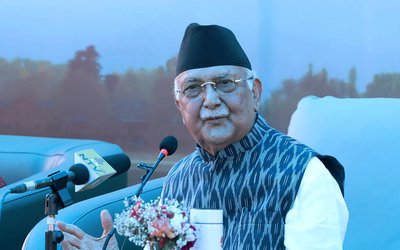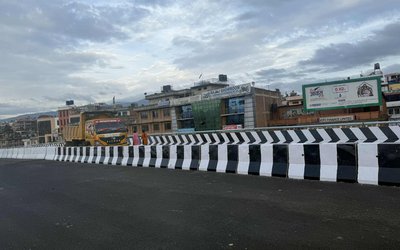More on News






Three months after the first of the devastating earthquakes hit Nepal, hundreds of thousands of survivors continue to require and rely on urgent humanitarian assistance. Shelter, food and livelihoods support, water and sanitation, medical and psychosocial care, and protection remain top priorities. The cold and damp monsoon weather exposes those affected to further hazards and, together with customs delays, adds to the challenges aid agencies tackle daily.
“The emergency is not over yet”, said Jamie McGoldrick, Humanitarian Coordinator in Nepal. “As long as humanitarian needs persist, relief agencies will continue to support the Government in addressing these vulnerabilities and ensuring the survival of communities affected”.
In the last three months, the humanitarian community provided shelter assistance to 340,000 families, distributed food to over 2 million people and provided safe drinking water to some 2.5 million survivors in 14 most-affected districts. Hundreds of thousands of children continue to benefit from education and psychosocial support, and 99.8 percent of health facilities were also restored. Protection efforts were enhanced through engagement of communities and women’s groups.
According to a press release issued by UN Information Center, strong logistical support and use of innovative aid delivery methods, including engagement of porters and trekkers and use of cash programming, proved indispensable in achieving these goals and overcoming the topography challenge.
“I am heartened and encouraged by the dedication of the responders: the Government, the many volunteers, my colleagues. Together, we achieved a lot”, said Mr. McGoldrick. “But we must continue".
Basic shelter will continue to be provided to families who lost their homes, as more-durable shelter solutions are sought and implemented. Aid agencies aim to assist more than 1.4 million people with food and another 1 million people with livelihoods support, and to provide safe drinking water and sanitation to 2.5 million people.
Medical camp kits will continue to replace damaged health infrastructure and temporary learning spaces are intended for additional 270,000 children. The humanitarian community is also planning ahead, to ensure the most vulnerable are assisted beyond the monsoon and prepared to survive through the harsh and cold wintery conditions.
“We cannot fail the most vulnerable communities, people who count on us more than ever with the monsoon season underway and the winter fast-approaching” added McGoldrick. “The humanitarian community can and will deliver on its commitments, provided that we receive the right support”.
To date, only US$ 210 million, or 50 percent, was received against the $422-million humanitarian appeal. An additional $222 million in support to post-earthquakes relief was provided directly to the Government of Nepal on a bilateral and in-kind basis.






